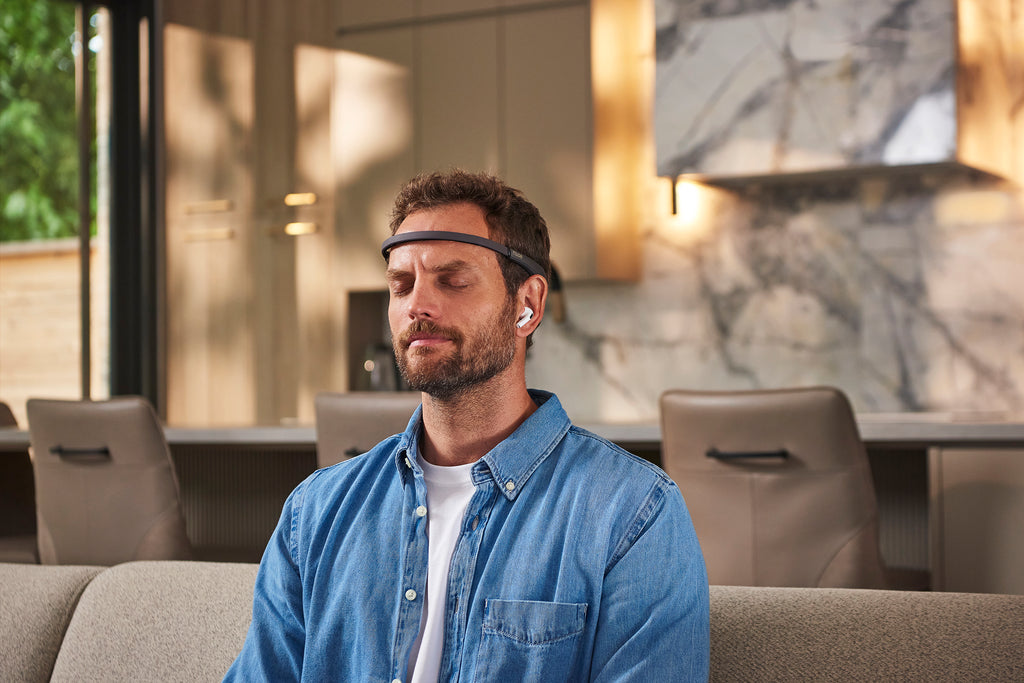The impact of EEG-based technology on OCD treatment

Obsessive-Compulsive Disorder (OCD) is a severe and often chronic mental health diagnosis, impacting about 2% of the population. It’s characterized by intrusive thoughts and repetitive behaviors, which can significantly impair functioning and quality of life. Recently, technology has started to offer new options for managing OCD symptoms. A new study by Lance L. Hawley and colleagues explores this integration of technology with mindfulness to treat OCD.
Technology meets mindfulness in OCD treatment
The study engaged 71 participants diagnosed with OCD based on DSM-5 standards, dividing them into two groups. One group used Muse’s EEG-based biofeedback device for an eight-week meditation program, while the other, a waitlist group, waited for treatment. This study aimed to discover if technological enhancements could help mindfulness practices at home.
The Muse headset uses strategically placed electrodes to measure brain activity in real time, offering feedback to guide users through meditation sessions. By tracking brainwave variations, the Muse device pinpoints moments of distraction and heightened focus, enhancing the meditation experience.
At three points during the study (beginning, middle, end), participants underwent “open monitoring” meditation with Muse devices to collect EEG data and provide insights into the participants’ brain patterns as they progressed through their corresponding program. They also answered questionnaires to assess their mindfulness practice and OCD symptoms throughout the study.
What does this mean for people with OCD?
The Muse group reported a notable shift in their mental patterns. They scored higher in the “Non-Reactivity” area of the Five Factor Mindfulness Questionnaire (FFMQ). This indicates a heightened ability to observe thoughts and emotions without immediately reacting to them.
Additionally, participants in the Muse group showed increased alpha and beta band power, usually linked to reduced mind wandering and increased attention and focus. These neurophysiological changes correlated with an improvement in OCD symptoms as measured by the Yale-Brown Obsessive Compulsive Scale (YBOCS).
These outcomes suggest that mindfulness, enhanced by technology like the Muse headband, can have a measurable impact on the brain’s functioning and the symptoms of OCD.
This study offers a glimpse into a future where mental health treatments go beyond managing symptoms and shift the brain’s own capacity for change and healing.
These key findings open doors to new possibilities in other mental health treatments. With technology like Muse, we have the potential to shift the way we approach mental wellbeing.

Understanding OCD and traditional treatments
OCD is a complex and often debilitating mental health condition characterized by persistent unwanted and intrusive thoughts (obsessions) and repetitive behaviors (compulsions). It affects millions worldwide, often leading to significant distress and impairment in daily life. Recognizing these symptoms is an important step in seeking appropriate treatment and understanding the potential benefits of new therapies like EEG-based technology.
Obsessions: intrusive and persistent thoughts
- Unwanted and persistent thoughts, images, or urges that trigger intensely distressing feelings.
-
Common obsessions may include fears of contamination, fears of harming oneself or others, intrusive sexually explicit or violent thoughts, and excessive focus on religious or moral ideas.
Compulsions: repetitive behaviors or mental acts
- Repetitive behaviors that a person with OCD feels driven to perform in response to an obsession. These are often done to reduce anxiety or prevent something bad from happening, but they’re not realistically related to the problem they’re intended to fix.
-
Common compulsions include excessive cleaning or handwashing, ordering and arranging things in a particular way, repeatedly checking things (such as locks, appliances, and switches), and compulsive counting.
Intensity and time consumption
-
OCD symptoms can be time-consuming, taking up more than an hour a day, and can significantly interfere with daily activities and social interactions.
Distress and disruption
-
The intensity of OCD symptoms can cause significant distress and impair work, school, and relationships.
Seeking reassurance and avoidance
-
A person with OCD may require constant reassurance from others, or they may avoid certain situations or environments that trigger their OCD symptoms.

Treating OCD Symptoms
Traditional OCD treatments include a combination of medication, typically selective serotonin reuptake inhibitors (SSRIs), and psychotherapy, with Cognitive Behavioral Therapy (CBT) being the most effective.
CBT, particularly Exposure with Response Prevention (ERP), has been the gold standard in OCD treatment. This approach involves gradually exposing patients to their fear triggers and teaching them to resist the urge to perform compulsive behaviors.
While effective for many, this treatment can be difficult and is not always successful. Some people either do not respond to CBT or find it too distressing, leading to a high dropout rate.
The limitations of traditional treatments highlight the need for alternative and complementary approaches. Not every individual with OCD responds to the same treatment in the same way, requiring a more personalized approach.
This is where the incorporation of mindfulness and technology, like the Muse 2 Headband and Muse S Headband, offers an exciting opportunity. By offering tools that can be used in conjunction with traditional therapies or as standalone interventions, technology-supported mindfulness practices could broaden the scope of effective OCD treatment options.
The role of mindfulness in managing OCD
Mindfulness, especially in managing OCD, offers a way to observe obsessive thoughts and compulsions without immediate reaction, aligning with ERP principles of acceptance and awareness.
The study highlights EEG-based technology, like the Muse 2 Headband, for enhancing mindfulness practices and reducing OCD symptoms through real-time feedback. As mindfulness gains acceptance, integrating such technology offers new opportunities for mental health treatment. This technology allows for remote monitoring and intervention, making mental health care more inclusive and accessible.
Muse also helps detect anxiety and relieve stress. Learn more about it here >>
